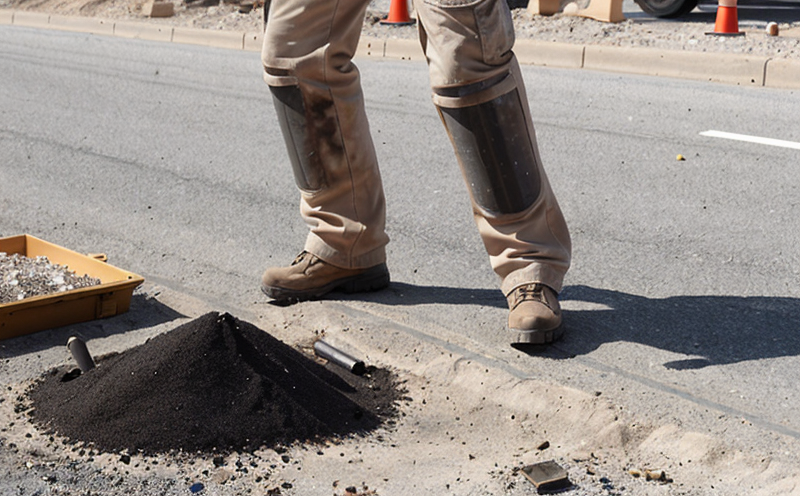UN Recommendations Series 8 Burning Rate of Propellants Testing
The UN Recommendations on the Transport of Dangerous Goods provide comprehensive guidelines and regulations to ensure the safe transport of hazardous materials. Among these, UN Recommendation Series 8 specifically addresses propellants used in explosives and blasting operations. This series is integral for industries such as mining where the transport, storage, and handling of blasting materials are critical.
The burning rate of a propellant plays a crucial role in its performance and safety during transportation and use. Accurate measurement ensures that the propellant meets all necessary standards for safe transport under UN Regulation 8. This service involves testing the burning rate of propellants to ensure compliance with these regulations, thus safeguarding both personnel and infrastructure.
The process begins with detailed specimen preparation tailored to the type of propellant being tested. The specimens are then subjected to controlled conditions that simulate real-world scenarios encountered during transport. High-precision instruments measure the burning rate under specified parameters such as temperature, humidity, and pressure.
Once testing is complete, comprehensive reports are generated detailing the results. These reports not only meet UN Regulation 8 standards but also provide valuable insights into the performance characteristics of the propellant. Compliance with these recommendations ensures that mining operations can transport their materials safely and efficiently while adhering to international safety protocols.
The importance of this testing cannot be overstated, especially in sectors where the safe handling and transportation of hazardous materials are paramount. By ensuring compliance with UN Regulation 8, we contribute significantly to enhancing workplace safety and reducing risks associated with transporting propellants.
| Parameter | Description |
|---|---|
| Burning Rate | The rate at which a propellant burns under specified conditions, critical for safe transport. |
| Temperature Range | The temperature range within which the burning rate is measured to ensure consistency. |
| Humidity Levels | The humidity levels that affect the burning rate of propellants. |
| Pressure Conditions | The pressure under which specimens are tested for accurate results. |
- Ensures compliance with international standards, enhancing safety in transportation.
- Aids in the development and improvement of propellant formulations by providing detailed performance data.
- Reduces risks associated with transporting hazardous materials, thereby protecting personnel and infrastructure.
Why It Matters
The safe transport and handling of explosives and blasting materials are critical components of the mining industry. The burning rate is a key factor that influences not only performance but also safety during transportation and use. Accurate measurement ensures that propellants meet all necessary standards for safe transport under UN Regulation 8.
Compliance with these regulations helps mitigate risks associated with transporting hazardous materials, thereby protecting personnel and infrastructure. The testing process is designed to simulate real-world conditions as closely as possible, ensuring that the results are both reliable and applicable in practical scenarios.
- Safety: Ensures safe transport of propellants by adhering to international safety protocols.
- Efficiency: Provides valuable insights into performance characteristics, aiding in process improvements.
- Compliance: Meets strict UN Regulation 8 standards, ensuring legal and regulatory compliance.
The importance of this testing cannot be overstated. By adhering to these recommendations, mining operations can enhance workplace safety while maintaining operational efficiency. The detailed reports generated from these tests provide crucial data that can be used for continuous improvement in propellant formulations.
International Acceptance and Recognition
The UN Recommendations on the Transport of Dangerous Goods are widely recognized and accepted across various countries and regions. These recommendations ensure that hazardous materials, including blasting propellants, are transported safely, reducing risks associated with potential accidents or incidents.
- Global Standardization: The UN Regulations provide a standardized approach to transporting dangerous goods worldwide.
- Regulatory Compliance: Adherence to these regulations ensures that mining operations comply with international standards, thereby avoiding legal and operational risks.
The recognition of these recommendations by various countries underscores their importance in enhancing safety across the globe. By ensuring compliance with UN Regulation 8, testing laboratories play a crucial role in upholding global safety standards for blasting materials used in mining operations.
Use Cases and Application Examples
Blasting propellants are integral to the mining industry, where they are used to initiate explosive events that aid in excavation and extraction processes. The testing of burning rates under controlled conditions ensures these materials meet all necessary safety standards.
| Use Case | Description |
|---|---|
| Blasting Operations | Testing ensures that propellants are safe for use in mining blasting operations, reducing risks associated with accidents or incidents. |
| Transportation Safety | Accurate testing guarantees compliance with UN Regulation 8, ensuring the safe transport of hazardous materials. |
| R&D Improvements | Data from these tests help in refining propellant formulations to enhance performance and safety. |
- Blasting Operations: Ensuring that propellants are safe for use during mining blasting operations, reducing risks associated with accidents or incidents.
- Transportation Safety: Accurate testing guarantees compliance with UN Regulation 8, ensuring the safe transport of hazardous materials.
- R&D Improvements: Data from these tests help in refining propellant formulations to enhance performance and safety.
The results of this testing are crucial for various stakeholders within the mining industry. Quality managers rely on accurate data to ensure compliance with international standards, while R&D engineers use it to improve product formulations. Compliance officers benefit from detailed reports that provide insights into potential risks and areas for improvement.





